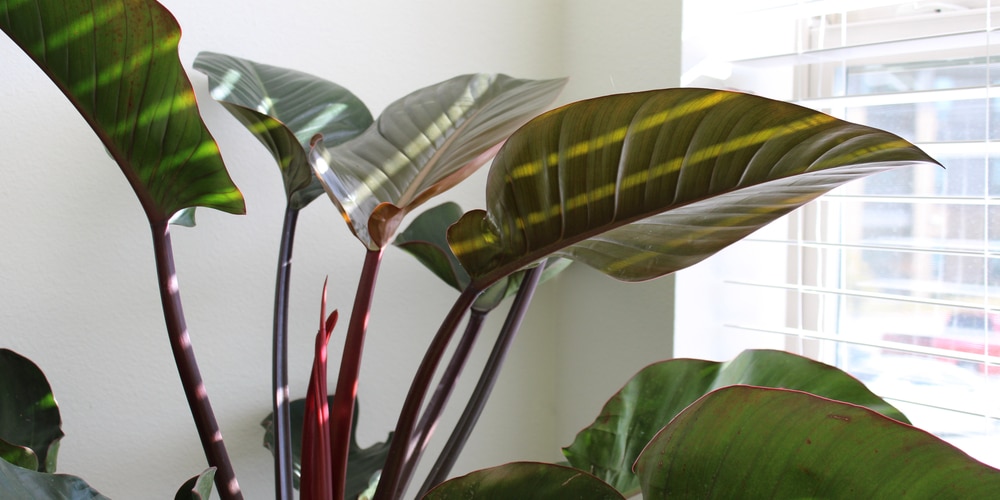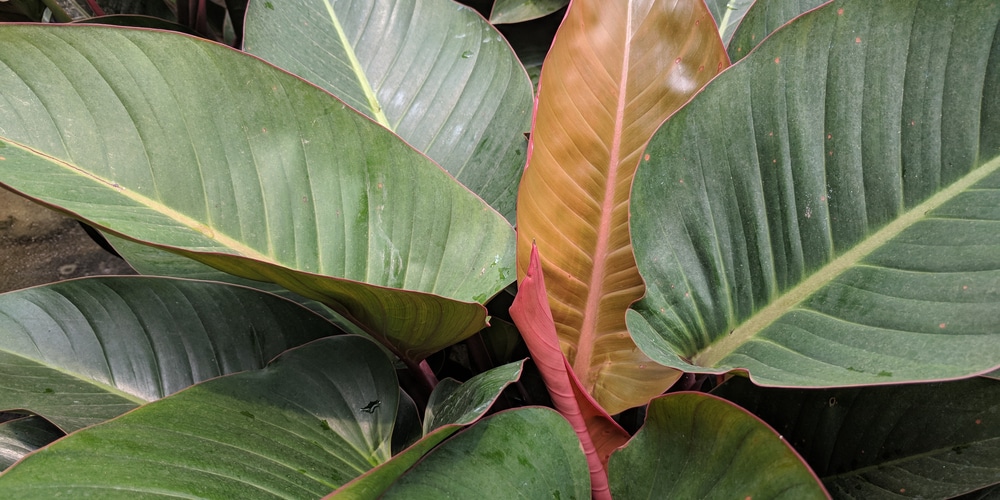The Philodendron Rojo Congo is a hybrid variety developed in Florida, using the Imperial red and Tatei. These plants have become very popular due to their lovely red foliage. They look exotic and can be grown outdoors in the right environment.
The Rojo Congo looks stunning and is very similar to the Imperial Red. These plants are easy to care for and are an excellent choice for beginners. They add a touch of color and some jungle vibes to your home. Let’s look at how to grow and care for a Philodendron Rojo Congo.
What is a Philodendron Rojo Congo

The Philodendron Rojo Congo is a unique plant that is part of the Araceae family. These plants are self-supporting and don’t need a pole or any support to climb. Rogo Congo has burgundy and green leaves, which are oval.
The Philodendron Rojo Congo is toxic to pets, especially cats and dogs. These plants can also affect humans and livestock if ingested. It’s best to keep tropical plants away from young children. It would help if you also were careful when handling your plant, as the leaves can cause skin irritation.
How to Care for a Philodendron Rojo Congo
The Rojo Congo has very similar care needs as other varieties of philodendron. Taking good care of your plant will allow it to thrive and look lush. A healthy plant is fast-growing and will make a great addition to any room in your home. Here are some care tips for your Philodendron Rojo Congo:
Sunlight Needs
Philodendron Rojo Congo plants like to be placed in bright indirect sunlight. These plants also do well in dabbled shade but will lose their lovely red coloring in areas of low light.
Ensure your plant isn’t left in the full sun as the UV rays will burn its delicate leaves. Sunburnt foliage will develop brown patches.
Watering Requirements
Getting your plant’s watering requirements right is very important as over or under watering can affect your plant’s health. The Rojo Congo needs slightly more water than other types of philodendron. Check the soil moisture and water when the topsoil feels dry. These plants are pretty drought resistant but shouldn’t be neglected.
The exact amount of moisture your plant requires will depend on many factors such as the climate, weather, and season, as well as where your plant is positioned and how much humidity its subjected to. You’ll likely need to water your plant twice a week in the summer. Watering can be reduced in the fall and winter.
Be careful not to overwater your plant as this may cause root rot. If you think your plant is sitting in soggy soil, you may need to replace the ground and repot your plant. If the roots look black and smell foul, you’ll need to cut off the infected roots and treat your plant with a fungicide.
Soil
Philodendrons thrive in soil that’s loose and able to drain well. The potting mix you use should feel crumbly and can be made from a mixture of standard houseplant soil, perlite, bark, peat moss, gravel, and sand. Alternatively, you can buy ready-made tropical houseplant soil. A soil designed for cacti is also good, and you can add some peat. Bottom of Form
The soil you choose needs to be well-draining but able to retain enough moisture. Adding organic matter will help with drainage and will make it less likely that your plant will become waterlogged.
Temperature
As the Philodendron Rojo Congo comes from the tropics, it likes warm to hot temperatures. As this variety is a hybrid, it thrives at the average room temperature. Aim to keep your plant at a temperature of at least 55F. It’s recommended that the temperature is between 65 and 80°F during the day. Be careful not to expose your plant to temperature fluctuations, and don’t leave it in a draft.
The Rogo Congo isn’t tolerant to frost and shouldn’t be left outdoors if the temperature is less than 55°F. Frost can kill philodendrons, so it’s best to bring your plants indoors in the fall.
Humidity
As this hybrid plant has been created from tropical plants, it likes a humid environment. Keeping your plant indoors may cause the leaves to dry out as the atmosphere is likely to be dry. Aim to create a humidity level that’s at least 50%.
Wiping the plant’s foliage or spraying with a fine mist two or three times a week will make your plant’s leaves look healthy. If you live in a dry climate, it may be beneficial to use a humidifier or move your plant into the bathroom or kitchen. Philodendrons can be placed in the shower to receive steam and moisture.
Fertilization
Philodendron Rojo Congo grows best if you use an organic fertilizer. A slow-release fertilizer is often the best choice as these plants aren’t heavy feeders. You can add some rabbit or chicken manure to your plant’s topsoil in the early spring. Loosen the topsoil and mix in the dung. Alternately soak the manure to create a liquid fertilizer that you can use to fertilize your plants.
Pests
Philodendrons are generally relatively pest resistant, and the Rojo Congo is no exception. These plants can sometimes be affected by sap-sucking insects such as mealybugs, spider mites, and aphids. If you notice any signs of insects, you should wipe your plant’s leaves as soon as possible. Act fast to stop an infestation from occurring. You can use neem oil or an insecticidal spray to help get rid of pests.
Conclusion
The Philodendron Rojo Congo is a beautiful tropical hybrid that has red foliage. This plant has become very popular in recent years due to its unique appearance. Your Rojo Congo plant will thrive with standard philodendron care but needs slightly more water than other varieties. These plants thrive in bright indirect sunlight, require high humidity, lose well-draining soil, and can be fertilized using organic matter in the growing season.
Related: Red Princess Philodendron
